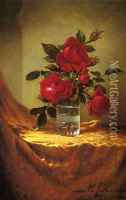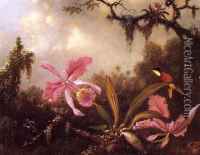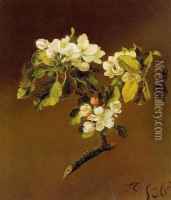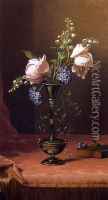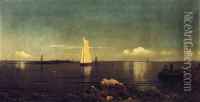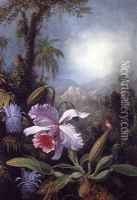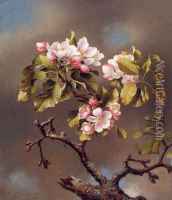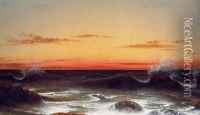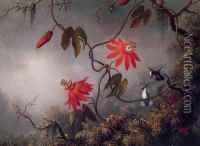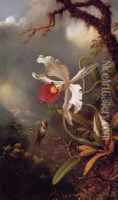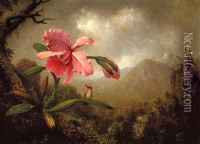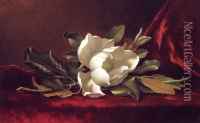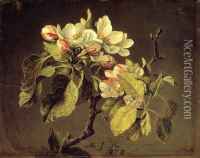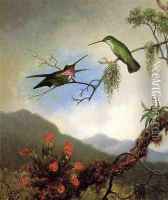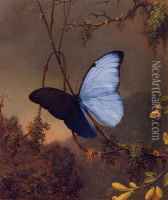Martin Johnson Heade Paintings
Martin Johnson Heade was an American painter known for his diverse range of subjects and styles. He was born on August 11, 1819, in Lumberville, Pennsylvania, and his career spanned nearly seven decades, reflecting a transition from the Hudson River School style to his unique approach to still life, landscapes, and seascapes. Heade received little formal training and initially began his career painting portraits. However, he soon shifted his focus to landscape and nature subjects, influenced by the works of the Hudson River School artists.
Heade traveled extensively throughout his life, which greatly influenced his art. His journeys took him across the United States, Europe, and South and Central America. These travels exposed him to a variety of landscapes and ecological environments, which became central themes in his work. Heade had a particular fascination with tropical scenes, especially those depicting hummingbirds and exotic flowers, which he observed during his trips to Brazil, Colombia, and other parts of Latin America.
One of Heade's most significant contributions to art was his ability to capture the subtle interplay of light and atmosphere, often focusing on the effects of storms and sunlight. His seascapes and salt marsh landscapes from the 1860s are particularly notable for their serene and moody qualities. Heade also explored the theme of the magnolia flower extensively in his still lifes, rendering them with meticulous detail and rich color.
Despite his prolific output and the unique quality of his work, Heade was not widely recognized during his lifetime. It wasn't until the mid-20th century that his art received greater attention and appreciation. Today, Martin Johnson Heade is acknowledged as a key American artist of the 19th century, and his work is celebrated for its beauty and originality.
Heade continued to paint until his later years, and he passed away on September 4, 1904, in St. Augustine, Florida. His legacy is preserved in numerous American art collections and museums, showcasing the breadth of his thematic interests and his distinctive artistic vision.
